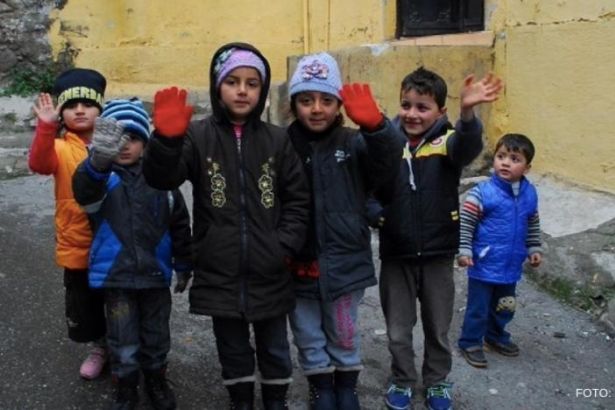Problems of refugee children on distance education in Turkey

Education was one of the topics that the political power managed the worst during the pandemic. While 2020-2021 was a lost year for many young people and children, this process also highlighted inequalities in education.
The problems experienced by the children of working families continue to find their way into Sol news. Another side of the problem is the children of refugees, who must be seen as a permanent reality of the country.
According to the data of the Directorate General of Migration Management, only 63% of school-age refugee children were continuing their education before the pandemic. While the enrollment in school rate among refugee children is already low, additional problems with access to distance education after the pandemic increased the risk of refugee children leaving school.
Konak Refugee Association, which operates in the district of Konak, in Izmir, where many refugees live, conducted a survey on the topic.
According to the results of interviews and surveys with 50 children and their families, only 30 families state that their children can benefit from distance education. The results of the survey showed that only 5 of the children who can access distance education could attend classes all the time.
List of the factors that prevent participation in the lessons includes as lack of sufficient technical equipment at home, insufficient internet access at home, language barrier of refugee children, insufficient conditions at home, the indifference of teachers and finally the problem of access to Education Informatics Network (EBA TV). Again, one of the striking results of the interviews with these 50 families is that there is not even a television in the 26 children's homes.
The results of the survey conducted with 26 girls and 24 boys are as follows:
- During the survey study, interviews were done with 3 kids in primary school first grade, 2 in 2nd grade, 10 in 3rd grade, 9 in 4th grade, 6 in 1st grade in middle school, 10 in 2nd grade, 5 in 3rd grade, 3 in 4th grade. Only 2 students attending high school could be interviewed. Since the schooling rate of Syrian refugees of high school age is low, the participation rate was also low.
-"How many people live in the house?" The question was answered by 2 families as 3 people, by 8 families as 4 people, by 13 families as 5 people, by 11 families as 6 people and by 16 families as 7 and more. 5,5 people per household.
- “How many students at home are enrolled in school?” The question was answered by 9 families as 1, by 15 families as 2, by 16 families as 3, by 6 families as 4, by 4 families as 5 and more. 2,6 people per household.
- “Is there any area at home that children can use alone during class hours?” The question was answered by only 7 families as “yes”. 43 families stated that there is not an area where children can listen to the lessons.
- “Do you have access to the Wi fi? The question was answered by 27 families as “yes”, and by 15 families as “no”. 8 families stated that they share it together with their neighbors.
- “Can your child follow the lessons in distance education?” The question was answered by 30 families as “yes”, 20 families answered as “no”.
- “How often can children attend classes in distance education?” The question answered by 5 families as “always”, by 10 families as “usually”, by 6 families as “sometimes”, by 9 families as “rarely”.
- 22 of 30 families who stated that their children follow the lessons replied that their children follow the lessons with mobile phones, 5 with tablets and 1 with a computer. Two families stated that their child follows the lessons with both a mobile phone and a tablet. "Has any institution provided a computer or tablet for you?" Only 3 families answered the question as “yes”. 1 family from the municipality, 1 family from the Ministry of National Education and 1 family from a non-governmental organization stated that they received tablet support.
- “Have the school management and teachers contacted you about the needs of your children during the distance education?” 19 out of 50 families answered as “yes”. 31 families stated that the school administration or teachers did not contact them during the distance education.
- “If your children cannot follow the lessons regularly, what is the reason for this?” 25 families answered as 'Not having enough cell phones, computers, tablets', 19 families answered as 'lack or insufficient internet access', 17 families stated 'language barrier', 16 families replied as 'unsuitable conditions at home for listening to lectures' and 'indifference of teachers', 14 families replied as 'problem access to EBA'. (This question was asked to 25 families whose children could not attend the classes regularly)
- “Is there a TV at home?” The question answered by 26 families as “yes”.
- “Do your children follow TRT EBA?” The question answered by only 14 families as “yes”. Families who answered yes were also asked about their frequency of follow-up. 4 families answered 'usually', 6 families answered 'sometimes' and 4 families answered 'rarely'. 12 out of 14 families answered that TRT EBA is beneficial for their children's education. The problem of accessing TRT EBA is among the reasons for not following the classes.
- “Do you think the education your children receive through distance education is sufficient?” The question answered by only 5 out of 30 families answered as “yes”.
- “What are the reasons for the insufficient distance education?” The question which more than one answer was accepted, answered by 19 families as 'home environment', by 12 families as 'not understanding the lessons', by 10 families as 'language barrier', 'lack of communication with the teacher', 'lack of technical knowledge', by 7 families as 'lack of stationery books' and by 5 families as 'the problem of adapting to distance education'.



